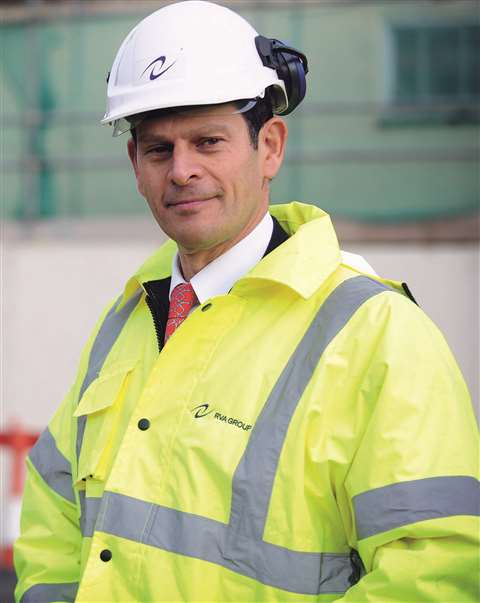Closing the door on a chaotic Covid-19 year
15 December 2020
It is always hard to write a reflection on the year without tripping into cliché territory. The same can be said when it comes to predicting what the next 12 months might hold in store, because nobody can ever say with true certainty what lies ahead.
All of this is undoubtedly compounded further still when you consider what 2020 has thrown up. Most of us are tired of reading about “unprecedented times” and, in truth, for many people – on both a personal and professional level – any words will simply feel trite. But it has been a year of great distress and reflect we must.
Pausing to take stock
In the early parts of 2020, many projects slowed or were suspended entirely – at least temporarily – while consultants, contractors and clients alike paused to take stock. For most, some agile schedule adjustments and roll outs of new site protocols meant “normality” could resume quickly. For others, especially those working internationally, ongoing travel restrictions have presented the need to reconsider how assignments can be tackled.

However, as with most unexpected events, the initial periods are the most challenging. So of course, the ongoing uncertainty posed by Covid-19 is not pleasant, and anxieties remain high for many colleagues, which requires considerate support from business leaders. But I have seen many industry professionals – particularly company owners – move on and now default to problem solving mode.
Because yes, Covid-19 has been a massive – and tragic – event. But the only way we can deal with it, certainly at management level, is to treat it as another set of circumstances to navigate as best we can.
We may well pass through the bulk of 2021 before we see any glimmers of life reverting to “normal”. But demolition projects will continue, and in truth, more work may arise if economic conditions accelerate asset rationalisation exercises.
Organisations are now relying on technology more than ever before, accelerated of course by the need to work from home when isolating. The firms who digitally transformed their businesses some time ago – and migrated from paper-based systems to cloud communications – adapted to lockdown relatively effortlessly. Others have found it tough, as much for cultural reasons as opposed to anything tech-related.
But some employers have been almost forced to trust that their teams can be productive when they are away from the traditional working environment, and this is now widely regarded as the norm.
It is difficult not to lose a sense of camaraderie when working disparately, so managers have had to don their “employee engagement officer” hat to keep colleagues psychologically connected, not just practically in touch with each other. I don’t think this is a bad thing. “The way things have always been done” is perhaps no longer acceptable.
I think many of us in the demolition industry have consequently re-assessed our working practices. Of course, there are instances where physical boots on the ground are needed. But an 800 km (500 mile) round-trip to meet a client for two hours perhaps isn’t one. When the cost of time, travel and accommodation has been calculated – as well as the carbon impact of otherwise avoidable journeys – the rationale for some site visits no longer stacks up. The same can be said for internal meetings with colleagues located throughout the country.
Teamwork and innovation
Away from Covid-19, and I have seen some great examples of teamwork, collaboration and innovation throughout 2020. At a conference in Europe at the turn of the year, for instance, I heard how one demolition firm encapsulated an entire cooling tower with a moveable sheeted framework to minimise dust. It will have probably cost millions, but protecting the environment – and the company’s reputation – was the priority. This meant that the use of explosives was not chosen for this structure, as would perhaps have ordinarily been expected.
That is not to say the explosives industry is becoming staid. Many of us will have recently read about the use of military-grade “kick and cut” charges, to bring down structures at a quarry. By removing the need for pre-weakening techniques, this approach presented potential safety advantages for site personnel, although it will – as with all other specialist approaches – have limitations. This technique arguably may not be suitable on a site located in the heart of a community, for example. However, it is important to recognise the innovation, and – where the structure, application and surroundings permit – it is a great example of developing a solution to fit a specific set of circumstances.
The point of no return
Staying with explosives engineering, the ever-depleting level of talent within this niche discipline causes me mounting worry – to the extent where I wonder if we have gone past the point of no return. I’m not suggesting we won’t see explosives being used on sites over the next three to five years – of course we will, and there are some world-renowned specialists who will play a part in such projects. It is also not to say that there aren’t any examples of formal learning and development programmes in progress, worldwide – there are, certainly at company level. But I fear the number of people entering the profession, simply isn’t sufficient to keep a critical mass and avoid this demolition technique largely disappearing in the medium-term future.
Therefore 2021 will be a crucial year for lots of reasons, but while Covid-19 poses the severity of risk that it currently does, the health and safety of us all must remain the priority. For demolition firms, this mindset goes without saying anyway. I look forward to seeing how the industry’s professionals collaborate, share knowledge, progress and develop, together, as the months unfold.
- Article originally published in the November-December 2020 issue of Demolition & Recycling International




